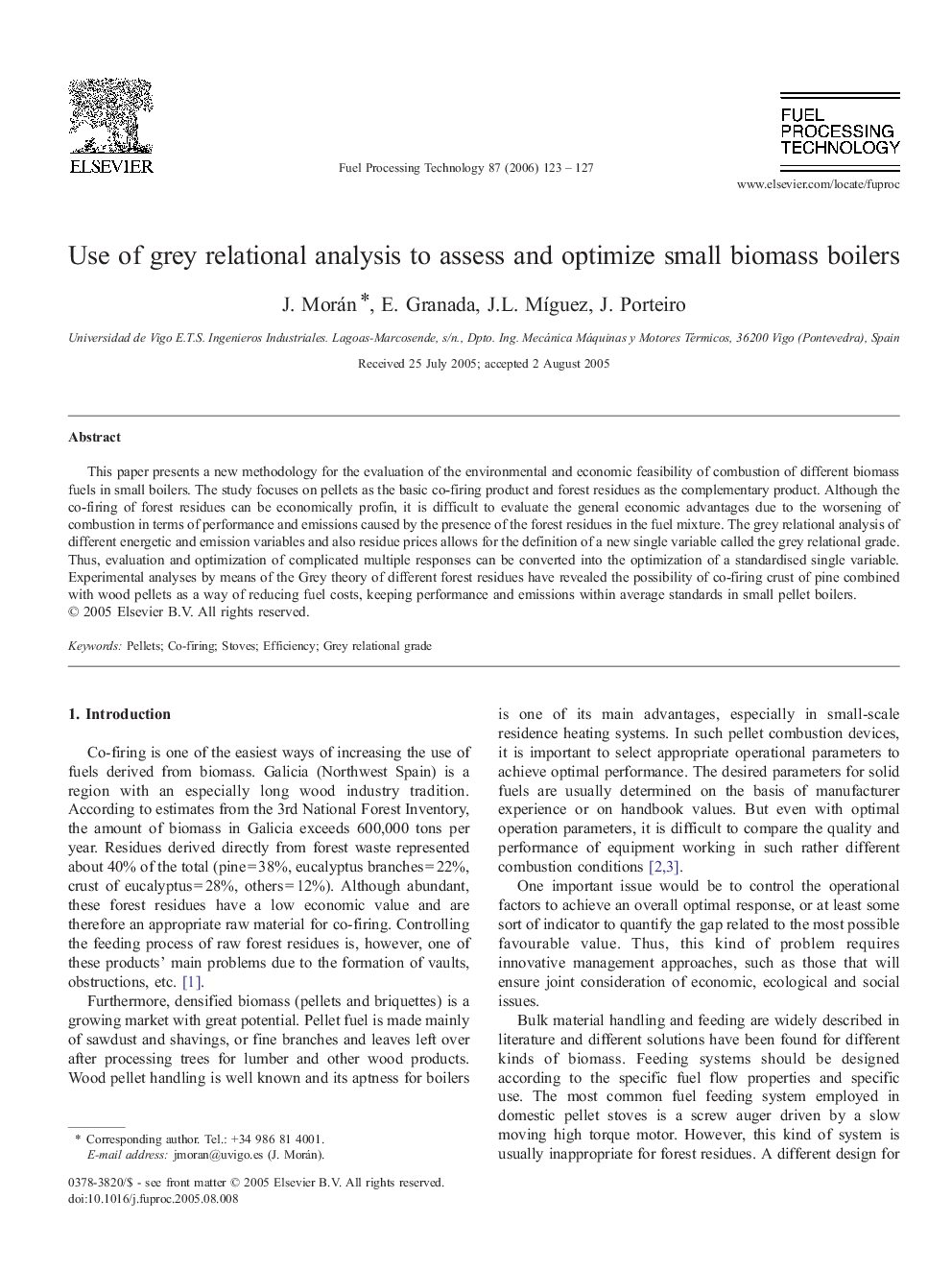| Article ID | Journal | Published Year | Pages | File Type |
|---|---|---|---|---|
| 211589 | Fuel Processing Technology | 2006 | 5 Pages |
This paper presents a new methodology for the evaluation of the environmental and economic feasibility of combustion of different biomass fuels in small boilers. The study focuses on pellets as the basic co-firing product and forest residues as the complementary product. Although the co-firing of forest residues can be economically profin, it is difficult to evaluate the general economic advantages due to the worsening of combustion in terms of performance and emissions caused by the presence of the forest residues in the fuel mixture. The grey relational analysis of different energetic and emission variables and also residue prices allows for the definition of a new single variable called the grey relational grade. Thus, evaluation and optimization of complicated multiple responses can be converted into the optimization of a standardised single variable. Experimental analyses by means of the Grey theory of different forest residues have revealed the possibility of co-firing crust of pine combined with wood pellets as a way of reducing fuel costs, keeping performance and emissions within average standards in small pellet boilers.
